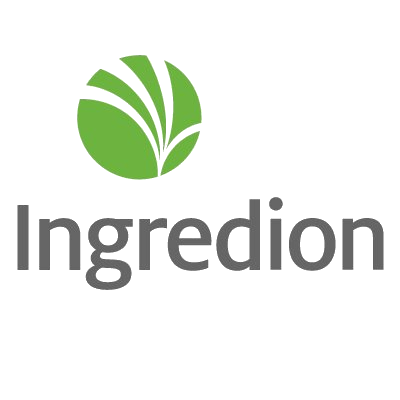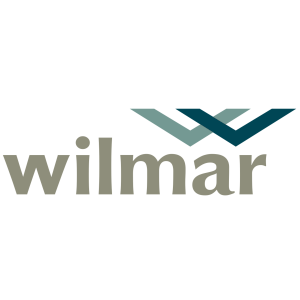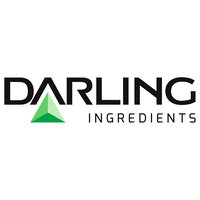
Ingredion Inc
NYSE:INGR

Profitability Summary
Ingredion Inc's profitability score is 53/100. We take all the information about a company's profitability (such as its margins, capital efficiency, free cash flow generating ability, and more) and consolidate it into one single number - the profitability score. The higher the profitability score, the more profitable the company is.

Score
We take all the information about a company's profitability (such as its margins, capital efficiency, free cash flow generating ability, and more) and consolidate it into one single number - the profitability score. The higher the profitability score, the more profitable the company is.
We take all the information about a company's profitability (such as its margins, capital efficiency, free cash flow generating ability, and more) and consolidate it into one single number - the profitability score. The higher the profitability score, the more profitable the company is.

Score

Score
Margins
Profit margins represent what percentage of sales has turned into profits. Simply put, the percentage figure indicates how many cents of profit the company has generated for each dollar of sale.
Profit margins help investors assess if a company's management is generating enough profit from its sales and whether operating costs and overhead costs are being contained.
Earnings Waterfall
Ingredion Inc

|
Revenue
|
7.4B
USD
|
|
Cost of Revenue
|
-5.6B
USD
|
|
Gross Profit
|
1.8B
USD
|
|
Operating Expenses
|
-781m
USD
|
|
Operating Income
|
1B
USD
|
|
Other Expenses
|
-363m
USD
|
|
Net Income
|
647m
USD
|
Margins Comparison
Ingredion Inc Competitors

| Country | Company | Market Cap |
Gross Margin |
Operating Margin |
Net Margin |
||
|---|---|---|---|---|---|---|---|
| US |

|
Ingredion Inc
NYSE:INGR
|
8.4B USD |
24%
|
14%
|
9%
|
|
| US |
A
|
Archer-Daniels-Midland Co
XETRA:ADM
|
20.2B EUR |
7%
|
2%
|
2%
|
|
| SG |

|
Wilmar International Ltd
SGX:F34
|
19.6B SGD |
8%
|
3%
|
2%
|
|
| US |

|
Bunge Ltd
NYSE:BG
|
10.6B USD |
6%
|
3%
|
2%
|
|
| CN |

|
Tongwei Co Ltd
SSE:600438
|
74.9B CNY |
9%
|
-7%
|
-7%
|
|
| MY |
S
|
Sime Darby Plantation Bhd
KLSE:SIMEPLT
|
32.2B MYR |
23%
|
10%
|
10%
|
|
| CN |

|
New Hope Liuhe Co Ltd
SZSE:000876
|
44.9B CNY |
5%
|
0%
|
4%
|
|
| MY |

|
IOI Corporation Bhd
KLSE:IOICORP
|
22.6B MYR |
0%
|
12%
|
12%
|
|
| MY |
K
|
Kuala Lumpur Kepong Bhd
KLSE:KLK
|
21.8B MYR |
0%
|
8%
|
3%
|
|
| US |

|
Darling Ingredients Inc
NYSE:DAR
|
4.9B USD |
22%
|
5%
|
5%
|
|
| ID |

|
Charoen Pokphand Indonesia Tbk PT
IDX:CPIN
|
68.7T IDR |
15%
|
8%
|
6%
|
Return on Capital
Return on capital ratios give a sense of how well a company is using its capital (equity, assets, capital employed, etc.) to generate profits (operating income, net income, etc.). In simple words, these ratios show how much income is generated for each dollar of capital invested.




Return on Capital Comparison
Ingredion Inc Competitors

| Country | Company | Market Cap | ROE | ROA | ROCE | ROIC | ||
|---|---|---|---|---|---|---|---|---|
| US |

|
Ingredion Inc
NYSE:INGR
|
8.4B USD |
18%
|
9%
|
17%
|
12%
|
|
| US |
A
|
Archer-Daniels-Midland Co
XETRA:ADM
|
20.2B EUR |
8%
|
3%
|
6%
|
4%
|
|
| SG |

|
Wilmar International Ltd
SGX:F34
|
19.6B SGD |
6%
|
2%
|
7%
|
3%
|
|
| US |

|
Bunge Ltd
NYSE:BG
|
10.6B USD |
10%
|
5%
|
9%
|
7%
|
|
| CN |

|
Tongwei Co Ltd
SSE:600438
|
74.9B CNY |
-12%
|
-4%
|
-5%
|
-5%
|
|
| MY |
S
|
Sime Darby Plantation Bhd
KLSE:SIMEPLT
|
32.2B MYR |
9%
|
6%
|
7%
|
5%
|
|
| CN |

|
New Hope Liuhe Co Ltd
SZSE:000876
|
44.9B CNY |
17%
|
3%
|
0%
|
0%
|
|
| MY |

|
IOI Corporation Bhd
KLSE:IOICORP
|
22.6B MYR |
11%
|
7%
|
8%
|
7%
|
|
| MY |
K
|
Kuala Lumpur Kepong Bhd
KLSE:KLK
|
21.8B MYR |
4%
|
2%
|
7%
|
4%
|
|
| US |

|
Darling Ingredients Inc
NYSE:DAR
|
4.9B USD |
6%
|
3%
|
3%
|
3%
|
|
| ID |

|
Charoen Pokphand Indonesia Tbk PT
IDX:CPIN
|
68.7T IDR |
13%
|
9%
|
18%
|
11%
|
Free Cash Flow
Free cash flow (FCF) is the money a company has left over after paying its operating expenses and capital expenditures. The more free cash flow a company has, the more it can allocate to dividends, paying down debt, and growth opportunities.
If a company has a decreasing free cash flow, that is not necessarily bad if the company is investing in its growth.



















































 You don't have any saved screeners yet
You don't have any saved screeners yet
